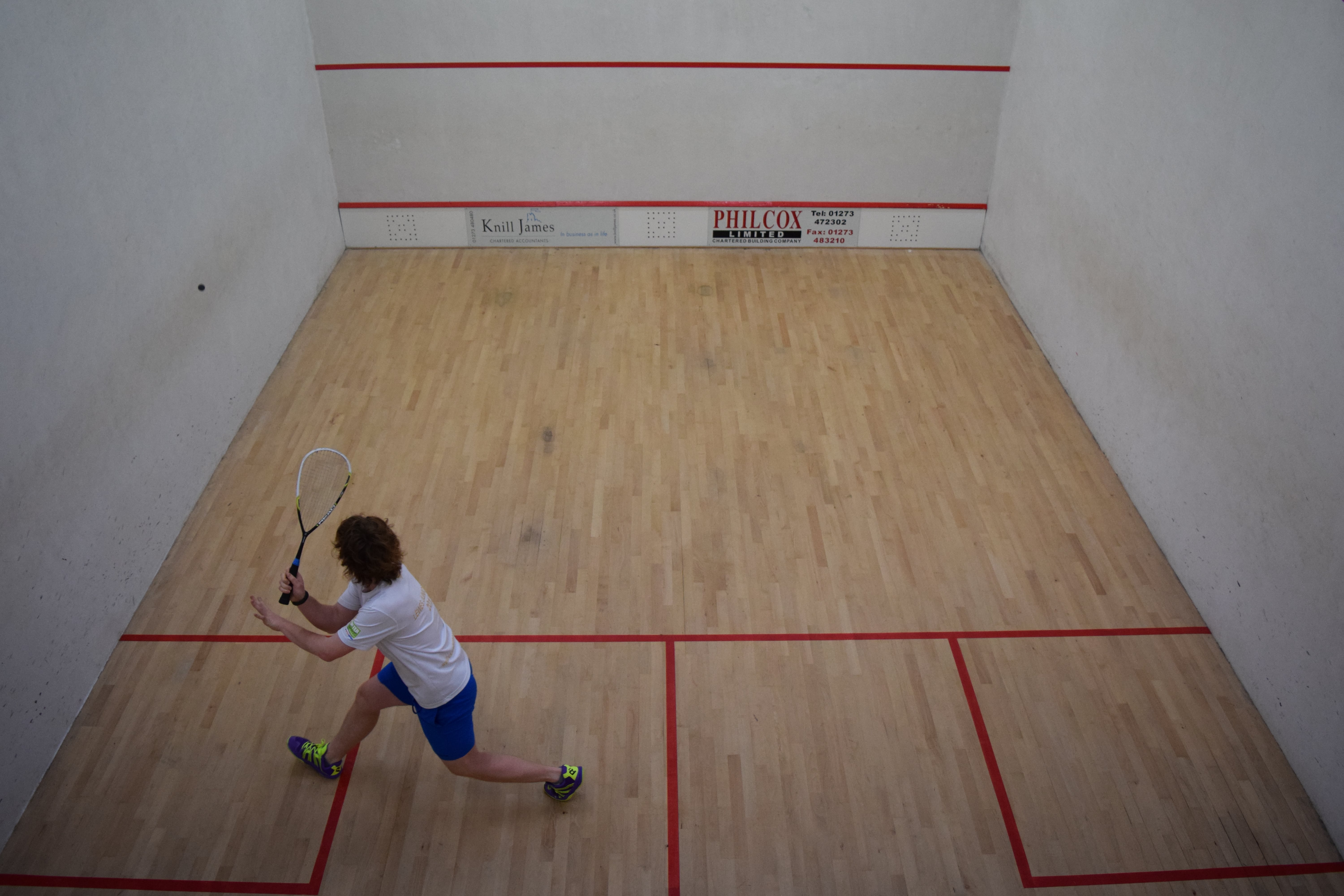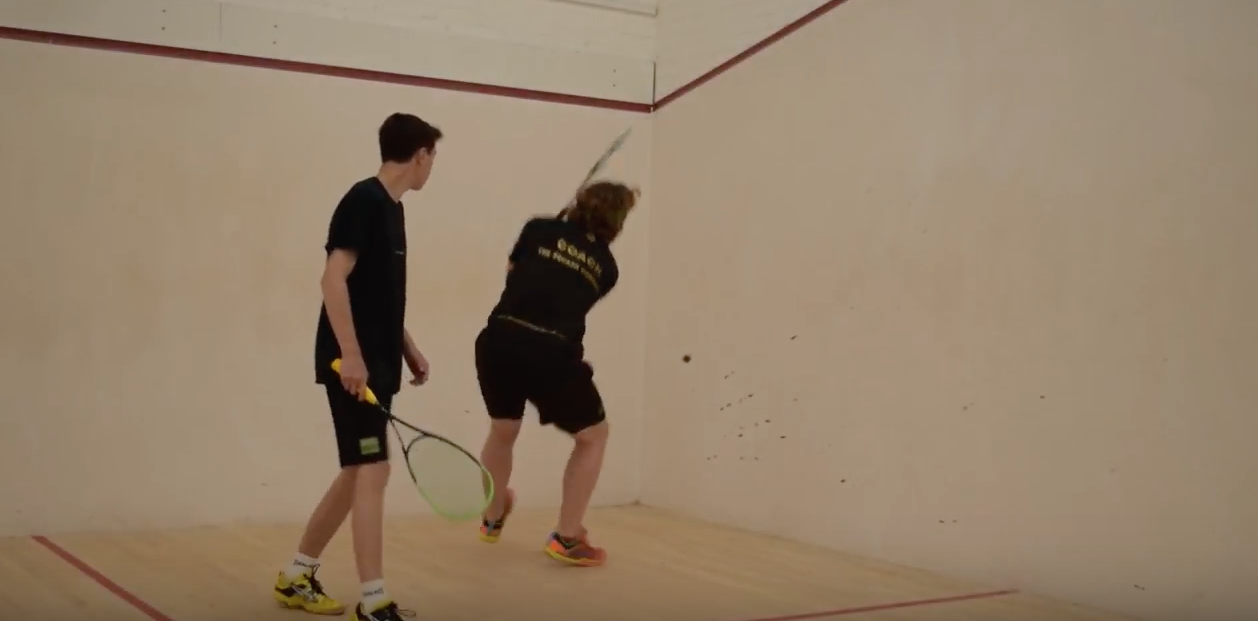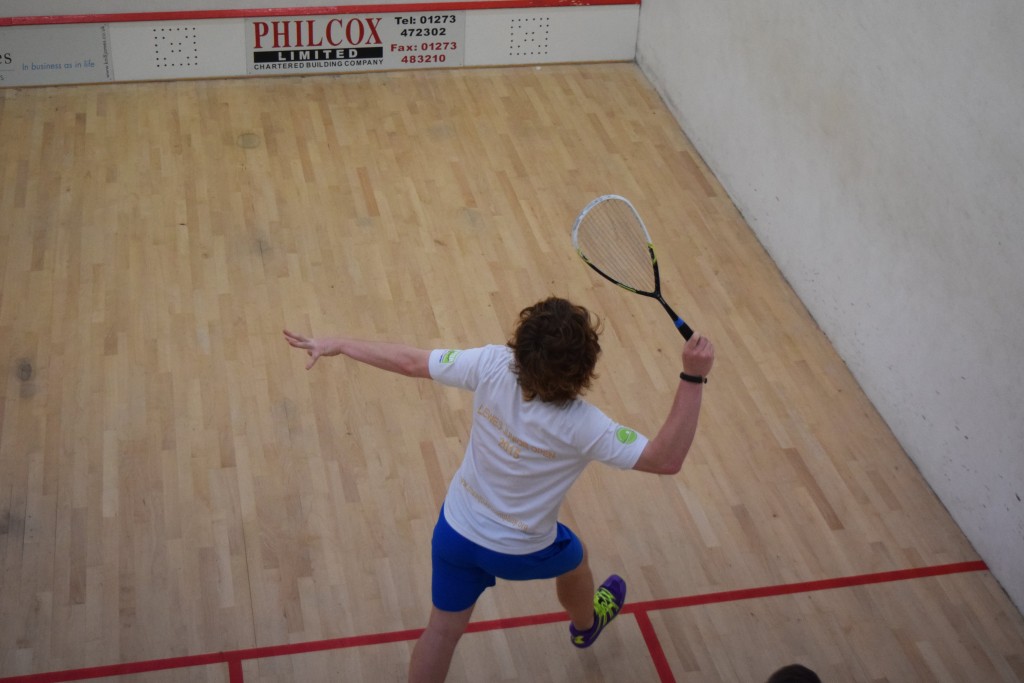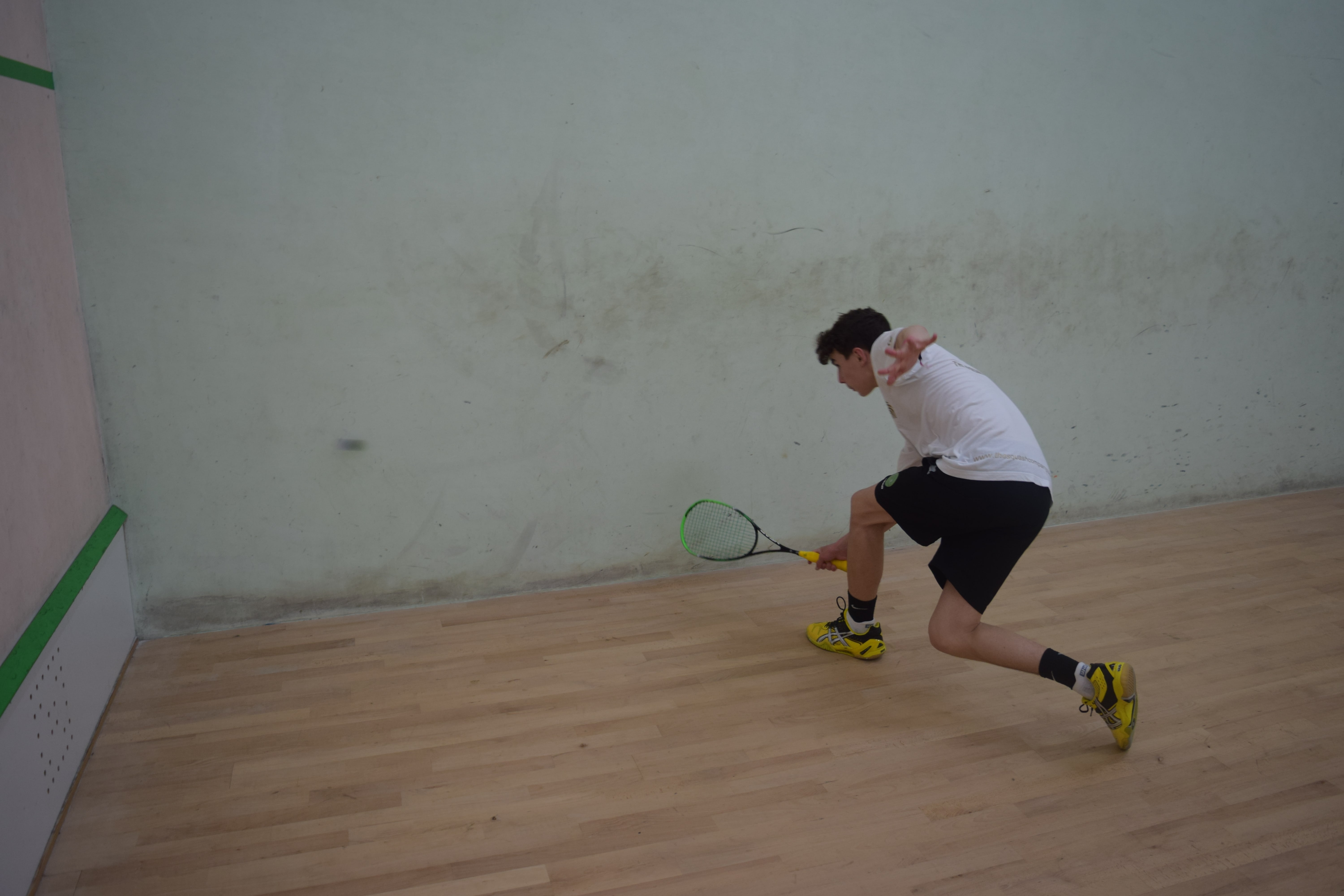Or just part of the way?
Most people learn fairly early on in squash that you should try to get back to the T-Position, but do people actually get back to the T-Position?
The ‘true’ T-Position
Generally, most players will get back towards the T-Position but not actually recover all the way to it. The ‘true’ T-Position, as everyone probably knows but forgets, is where the short-line meets the T-Line or serve line on the floor, which creates the ’T’ shape known as the T-Position. In some matches and on some courts during high temperatures, this might not be too damaging, but it certainly prevents you from fulfilling your potential. 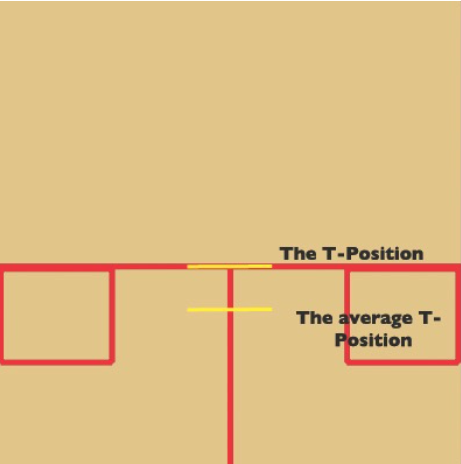
When it’s hot and there are lots of hard length shots being hit it might be sensible to not return all the way to the T-Position, but recovering to the ‘The average T-Position’ (pictured above) will give your opponent opportunities and also deny you key opportunities.
The benefits of recovering to the true The T-Position include:
- Being in position to create and use volley opportunities more often and earlier
- Being able to cover short shots better
- Being able to do more damage with short shots by playing them earlier
Some players might think that they can volley enough from a deeper position, but the truth is even if you volley a lot from a deep position you will be missing some opportunities which could do even more damage to your opponent. The shots you are volleying will be hit half a second or a second later than you would be hitting them if you were on the T-Position. You shouldn’t underestimate the difference this can make. It puts so much more pressure on your opponent physically, which in turn puts pressure on their technique and mental game, all of which they’ll have to cope with in a faster paced game that will sap their energy.
Your opponent is being let off if you are not taking advantage of these benefits. Who doesn’t like their opponent taking their time and not applying pressure? These opportunities are presented to your opponent if you are allowing them to take the T-Position by sitting deep behind the T. Then, you allow them more time to play a better shot, and because you aren’t in a great position to volley, you will probably be pushed to the back of the court and lose possession of the T-Position, which will then give them the chance to reap the benefits of the advanced T-Position.
Pay attention to your T-Positioning the next time you go on court. Are you getting back to the T-Position as well as you can? Or are you comfortable to play against?
